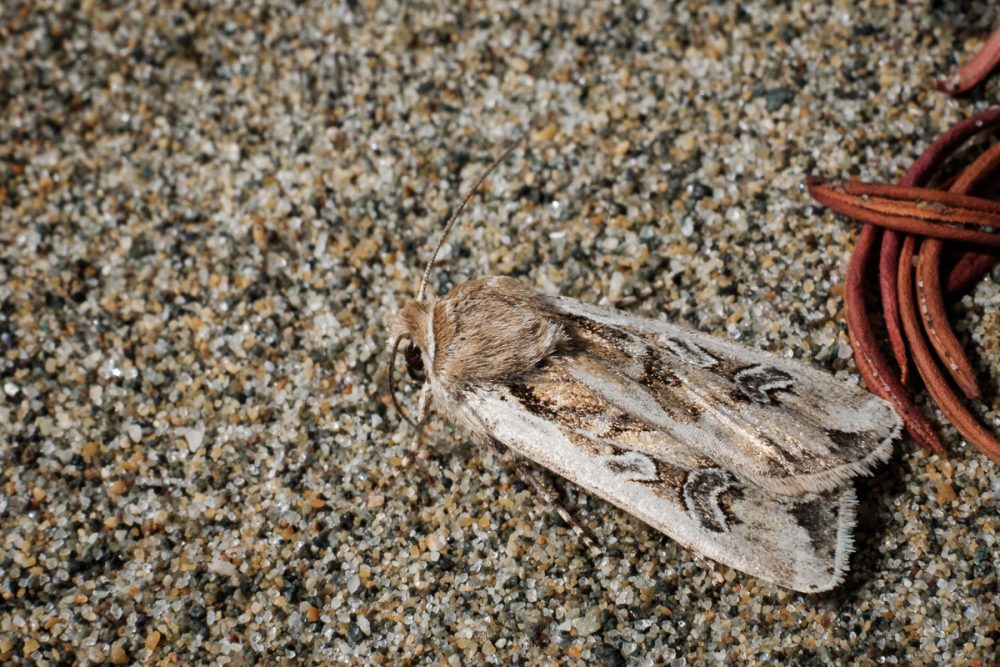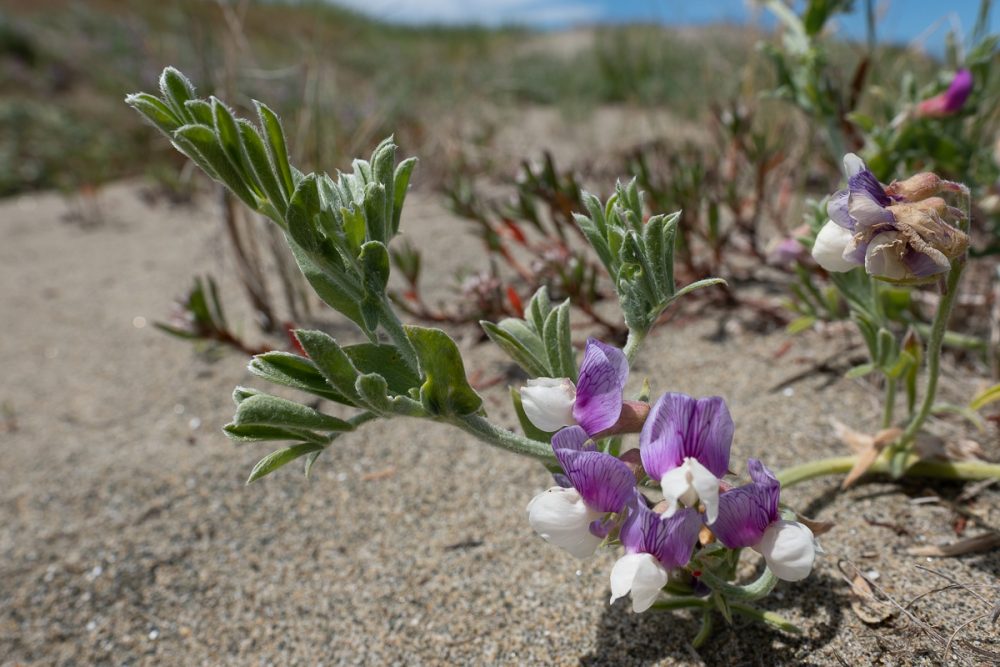Cutworm moth, dart moth—Euxoa wilsoni doesn’t really have a common name. It took a little detective work to narrow down the options, eliminate possibilities, and come to a tentative identification of this beautiful moth I found in the sand dunes at Wickaninnish Beach in Pacific Rim National Park Reserve.
Moths are a challenge to observe and identify. They don’t stay still long enough to photograph and a macro lens is usually required to get detailed images that are useful for identification. In addition, moths are typically nocturnal which makes them harder to find. Because of cryptic colouration, non-moving moths blend in with the surface they are resting on.

Euxoa wilsoni Blends In
While photographing wildflowers in the sand dunes at Wickaninnish Beach I noticed movement out of the corner of my eye. A small moth with brown markings on its wings had landed nearby, blending in with the sand. These dunes are home to yellow sand-verbena which is a food plant for the rare sand-verbena moth and there are records of that species of moth in the dunes. However, this moth didn’t look like a sand-verbena moth—the wing pattern was more complex. I was able to take several photographs of the moth before it took flight and disappeared into the dunes.
Several key features help to separate Euxoa wilsoni from other similar moths. The overall orange-tan colour and the pale cream costa (leading edge of the wing) are noticeable. The boomerang shaped reniform spot on the wing is distinctive. In addition, a “W” shaped mark appears on the outer margin of the wing.
While wing pattern helped to eliminate some possible alternatives for this moth, a bigger clue was habitat. The foreshore dunes along the Pacific Ocean at Wickaninnish beach are ideal habitat for Euxoa wilsoni. The dunes are a good mix of open sand and beach grass and they also contain food plants for this species of moth. Both grey beach peavine (Lathyrus littoralis) and beach pea (Lathyrus japonicas) can be found here. These plants are members of the pea family (Fabaceae) which the larva typically feeds on. Another food plant, silver burweed (Ambrosia chamissonis), grows on the edges of the dunes as well.

Visual features, appropriate habitat, and nearby larva food plants were clues which helped to identify this moth in the sand dunes at Wickaninnish Beach. A fleeting encounter with Euxoa wilsoni was a pleasant surprise and a reminder to look carefully for other insects that make living in sand dunes a specialty.